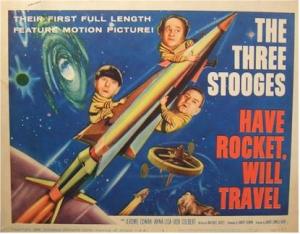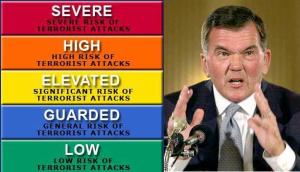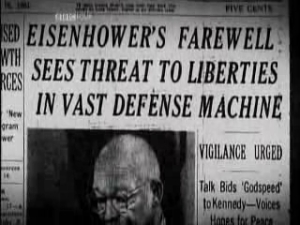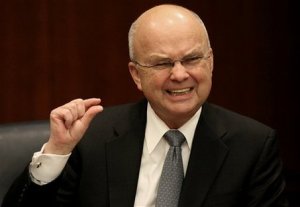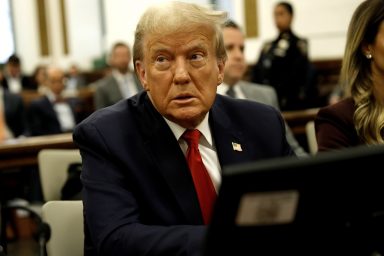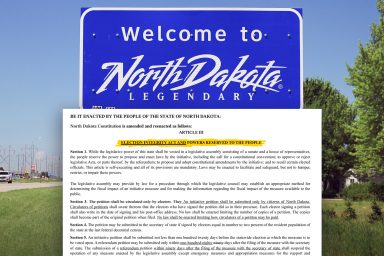If you’d invested a trillion dollars in something, you’d definitely want a positive return. Yet the latest iteration of the military industrial complex, exemplified by the creation of the Department of Homeland Security, seems only to have produced more war, more terrorism, more surveillance and more presidential protection blunders. You can blame it on 9/11, but the blueprints were already there.
Just when did the United States government start referring to the country as the “homeland?”
If you were to answer “after 9/11,” you would be wrong. That’s the surprise. What is not at all surprising is the exponential expansion of what some call the “security-industrial complex” since that day in September thirteen years ago.
What’s happening now—the government’s search for self-justifying excuses to claim broader powers against a menace it says is ubiquitous—is a cycle that’s been repeated since America launched its first “War on Drugs” in the 1930s.
Today’s on-going proliferation of the national security state has created a new profit center for a large number of American companies with deep ties to military and intelligence agencies. And as bureaucracies and profits have grown, personal liberties have suffered their biggest contraction in a century, thanks to the Patriot Act and other legislation designed to increase surveillance in the name of eternal vigilance.
 And here’s the irony: It all began before 9/11, with the kind of bipartisan commission usually convened to bury a hot-potato issue beneath a slurry of platitudes.
And here’s the irony: It all began before 9/11, with the kind of bipartisan commission usually convened to bury a hot-potato issue beneath a slurry of platitudes.
***
In 1998, President Bill Clinton tasked former Senators Gary Hart, a Colorado Democrat, and the late Warren Rudman, a New Hampshire Republican, to chair the U.S. Commission on National Security/21st Century. The Commission panel was a cross-section of the military-industrial-media complex. Its members included Leslie Gelb, longtime New York Times correspondent and editor; Norman Augustine, former CEO of Lockheed-Martin; and Army General John Galvin.
Not If, but… When
The panel gave its report and recommendations in January 2001. Both Senators Rudman and Hart concluded that it was not a matter of “if” the U.S. would suffer a mass-casualty terrorist strike but “when.” Among the panel’s recommendations was the massive integration of all of the nation’s domestic security, disaster planning and recovery functions into one behemoth called the Department of Homeland Security (DHS).
After 9/11, President George W. Bush faithfully executed the Hart-Rudman blueprint and President Obama and the Congress have continued to commit hundreds of billions to it. And so it was that the envisioned “peace dividend” cutbacks—which the end of the Cold War was supposed to have brought to the defense budget (and the bottom line of defense contractors)— were buried for good.
By 2011, according to Brown University’s Costs of War Project, the total cost for post-9/11 Homeland Security had already reached $649 billion and annual spending since then is running at about $70 billion a year.
At that rate, the price tag for the entire post 9/11 Homeland Security domestic undertaking is only a year or two away from reaching a trillion dollars. So what’s the return been on that investment?
Spreading War and Terror
Indeed, and of supreme irony, the main effect of the War on Terror, as executed so far, has been not to eliminate terror, but to spread it—and to generate a state of perpetual war.
Although the government swears it’s just airstrikes, the fact is that the U.S. is back in combat in Iraq. It took the so-called Islamic State of Iraq and Syria just a matter of months to undo years of American efforts to rebuild a nation the U.S. had previously destroyed.
President Obama, a civilian who like most presidents can’t be expected to know what to do in these situations, logically put the blame on the vaunted U.S. intelligence establishment for both underestimating the formidable nature of the threat posed by ISIS and overestimating the Iraqi military’s ability to contain it.
Yes, that’s the same intelligence establishment that got WikiLeaked and Snowdened. The same cluster of agencies that the late New York Senator Daniel Patrick Moynihan angrily blamed for missing the implosion of the Soviet Union, as well as both World Trade Center attacks. The very same subset of departments that’s claimed ever-increasing amounts of the public treasury even as Congress retrenched on food stamps and long-term unemployment benefits. The same intelligence establishment that insists on its right to monitor virtually all electronic communications here and abroad in the name of counter-terrorism.
 The post-9/11 incompetence of the nation’s security machinery has been highlighted by the Keystone Kops-style misadventures of the Secret Service that have put the President and his family repeatedly at risk.
The post-9/11 incompetence of the nation’s security machinery has been highlighted by the Keystone Kops-style misadventures of the Secret Service that have put the President and his family repeatedly at risk.
This series of fiascoes recently led to the sacrificial-lamb resignation of Secret Service Director Julia Pierson—though so far, there is no indication of substantive changes. Perhaps the most egregious of these failures was Army veteran Omar Gonzalez’ sprint across the lawn and into the White House while carrying a knife. This breakdown of security at what may be the most closely guarded residence in the country harked back to the curiously lackadaisical approach of John F. Kennedy’s protection detail in Dallas.
The latest embarrassments reflect the increasing dysfunction at the Secret Service since the agency was transferred from the Treasury Department to DHS in 2003, according to author and investigative reporter Ronald Kessler. What happened, says Kessler, is that the agency became more politicized, more responsive to political operatives, and less attentive to its own security protocols and whistle-blowers within its ranks.
“Agents and officers are afraid to voice their opinion and point out these very obvious problems because they will be punished,” Kessler said in a C-SPAN interview. “That’s how corrupt the agency is.”
When the agency came under DHS control, it “became political, more compliant, more subject to political pressures and that’s when this laxness and corner-cutting began,” Kessler added.
Supporters of the DHS counter that it has clearly succeeded in its primary mission of protecting “the homeland,” because the U.S. hasn’t experienced another terrorist attack on the scale of 9/11.
Yet these same supporters cite the April 2013 Boston Marathon bombing as proof that America needs still greater vigilance against terrorism at home. That’s despite the dozens of unanswered questions about what really happened in Boston, including serious ones about the FBI’s prior relationship with alleged bomber Tamerlan Tsarnaev.
All of this is somehow resolved in the paradoxical assertion —that DHS is a success, but that more and more money and power is required to expand its reach and effectiveness.
The War on Whatever’s Handy at the Time
This particular mix of institutional self-congratulation and fear-mongering is not a new story in the United States. Against the backdrop of a newly identified menace to the American Way of Life, new laws are passed and a powerful new entity is added to the government’s law enforcement machinery, with dire effects on the civil liberties of ordinary Americans.
One instructive example comes from a subset of the history of the so-called War on Drugs, the campaign against marijuana.
That particular battle was conjured up in the 1930s to give the ranks of federal agents that had enforced Prohibition in the 1920s something to do after alcohol became legal again. The target became “pot,” which until 1937, was widely available as a patent medicine.
A clever bureaucrat named Harry Anslinger, commissioner of the Federal Bureau of Narcotics from 1930-1962, painted marijuana as the single greatest threat to U.S. values and morals. He did this through a publicity campaign abetted by a compliant media. Newspaper tycoon William Randolph Hearst and the FBI’s J. Edgar Hoover were among his strongest allies.
 When Communism became the common enemy in the 1950s, Anslinger declared marijuana and drug trafficking in general to be part of a global conspiracy to advance the Reds’ goal of world domination. In a flight of self-serving rhetoric unconnected to any facts, he blamed “evil masterminds” in Communist China for seeking to hook America’s youth on debilitating substances. Subsequent historical research has thoroughly debunked Anslinger’s geo-political story line.
When Communism became the common enemy in the 1950s, Anslinger declared marijuana and drug trafficking in general to be part of a global conspiracy to advance the Reds’ goal of world domination. In a flight of self-serving rhetoric unconnected to any facts, he blamed “evil masterminds” in Communist China for seeking to hook America’s youth on debilitating substances. Subsequent historical research has thoroughly debunked Anslinger’s geo-political story line.
But the effect of Anslinger’s campaign, best exemplified by the baseless hysteria of the propaganda film-turned-cult classic “Reefer Madness,” was felt for decades. The same sentiments fueled the creation of President Richard Nixon’s War on Drugs; in 1971 Nixon declared drug abuse “public enemy number one.”
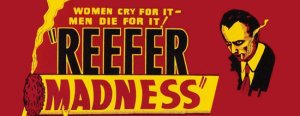 It took nearly 84 years before the federal government’s War on Drugs dogma loosened up enough to allow the legal sale of recreational marijuana, a demonstration of how bureaucratic inertia can prolong policies well past their expiration dates.
It took nearly 84 years before the federal government’s War on Drugs dogma loosened up enough to allow the legal sale of recreational marijuana, a demonstration of how bureaucratic inertia can prolong policies well past their expiration dates.
***
More and more people are realizing how badly the U.S. needs to critically re-evaluate the unchecked expansion of the War on Terror and its propagation of an all-encompassing surveillance state. But a veritable army of latter-day Harry Anslingers have a stake in preventing such a public discussion.
They’re the same officials who drafted and executed the Homeland Security strategy in the first place. Many have parlayed their government service into lucrative commercial enterprises and reputation-enhancing sidelines as TV talking heads, discussing national security issues on an endless round of Sunday morning news shows. There, they are mostly identified by their former titles—with no mention of their current involvement in the global counterterrorism industry.
Examples include DHS’s first leader, former Pennsylvania Governor Tom Ridge. He formed Ridge Global to offer multinational companies advice on risk management, energy consulting, trade and maritime management. Former Homeland Security Secretary Michael Chertoff now heads The Chertoff Group, which draws on a bench of former military and intelligence officials from the United States and Europe, such as General Michael Hayden, former Director of the Central Intelligence Agency.
In just its first year of business, the Chertoff Group helped facilitate $2.1 billion in deals involving biometrics, personnel protection security training, cyber security and data analytics. And that’s just a tiny fraction of the money in play.
Occasional voices of reason have been heard above the din of the fear-mongers. The House Committee on Homeland Security has raised a warning flag. It documented that DHS in its first five years racked up $15 billion in failed contracts—or about a third of its contracting budget. Among the committee’s list of costly fiascoes: a deeply flawed $25 billion makeover of the Coast Guard’s aging fleet, and expensive airport and border screening technologies that failed to deliver greater security.
As recently as May, DHS Inspector General John Roth admitted in Congressional testimony that his agency was still coming up short when it came to contracting. He added that DHS continues “to struggle with acting as an integrated, single entity to accomplish its mission.”
It’s been said that war is too important to be left to the generals. That certainly holds for the War on Terror. It also holds for the metastasizing security-industrial complex, whose evolving surveillance state promises real threats to the American way of life.
Photo Credits:
IMAGE: Surveillance-Industrial (ACLU)
[box] WhoWhatWhy plans to continue doing this kind of groundbreaking original reporting. You can count on us. Can we count on you? What we do is only possible with your support.
Please click here to donate; it’s tax deductible. And it packs a punch.[/box]
